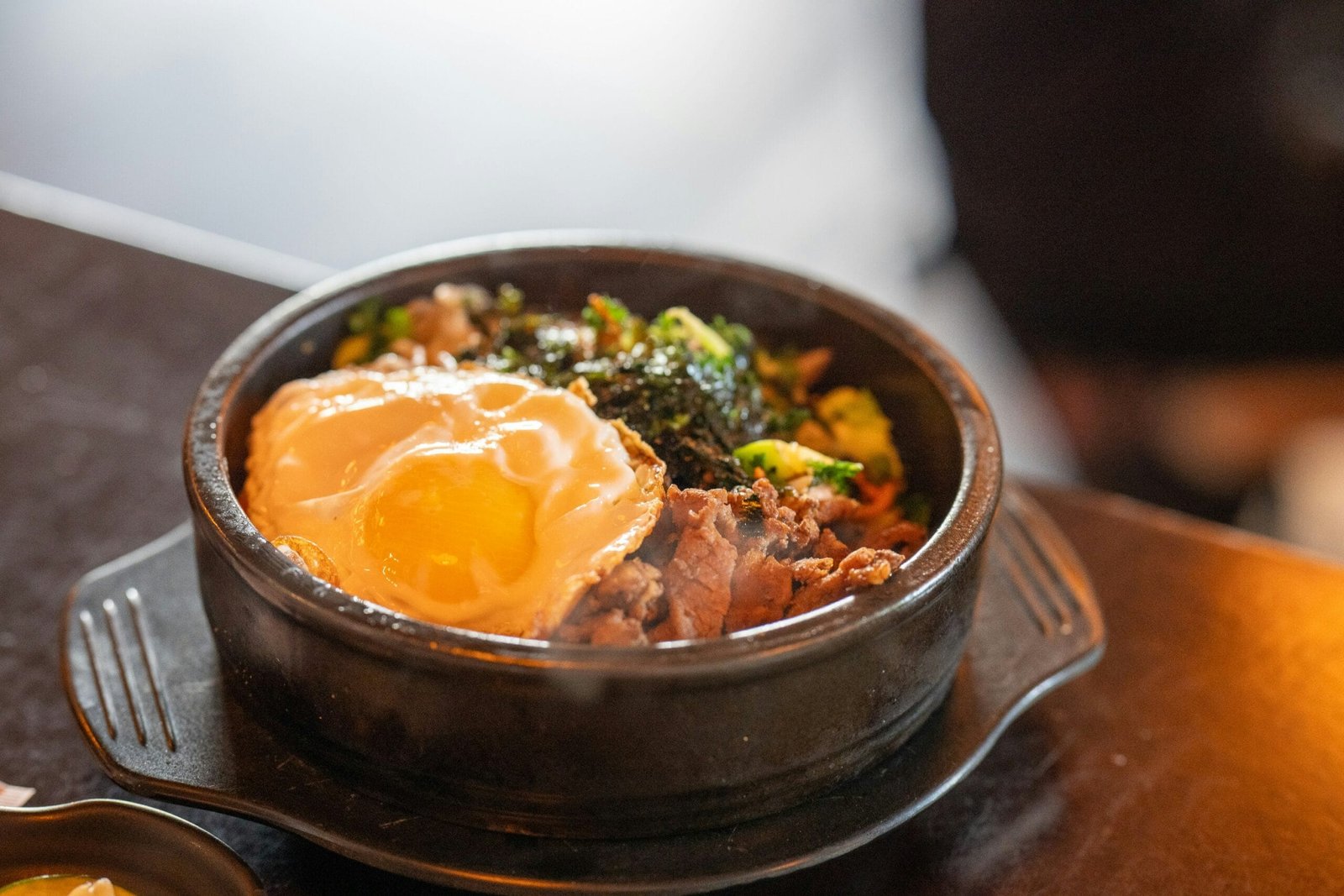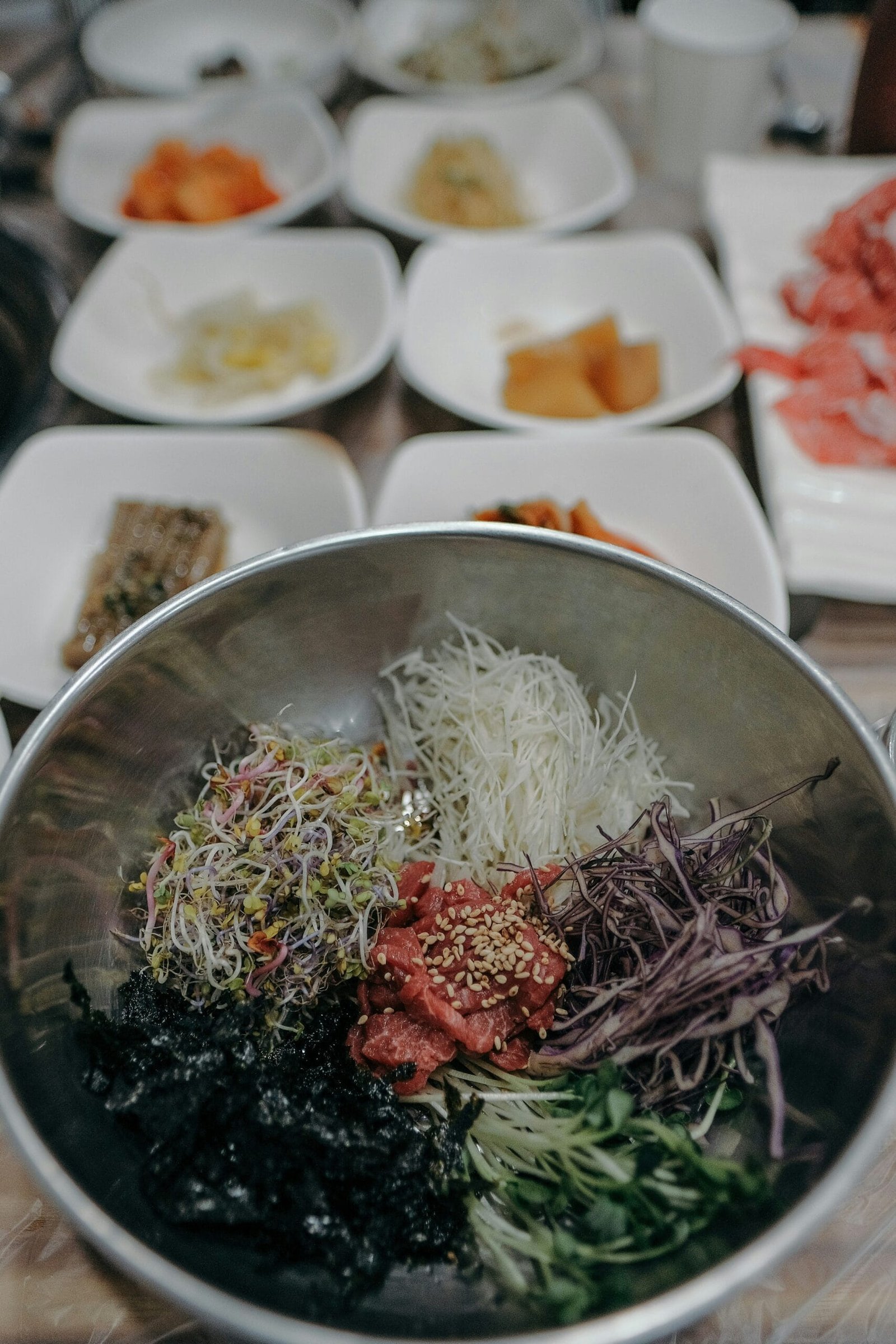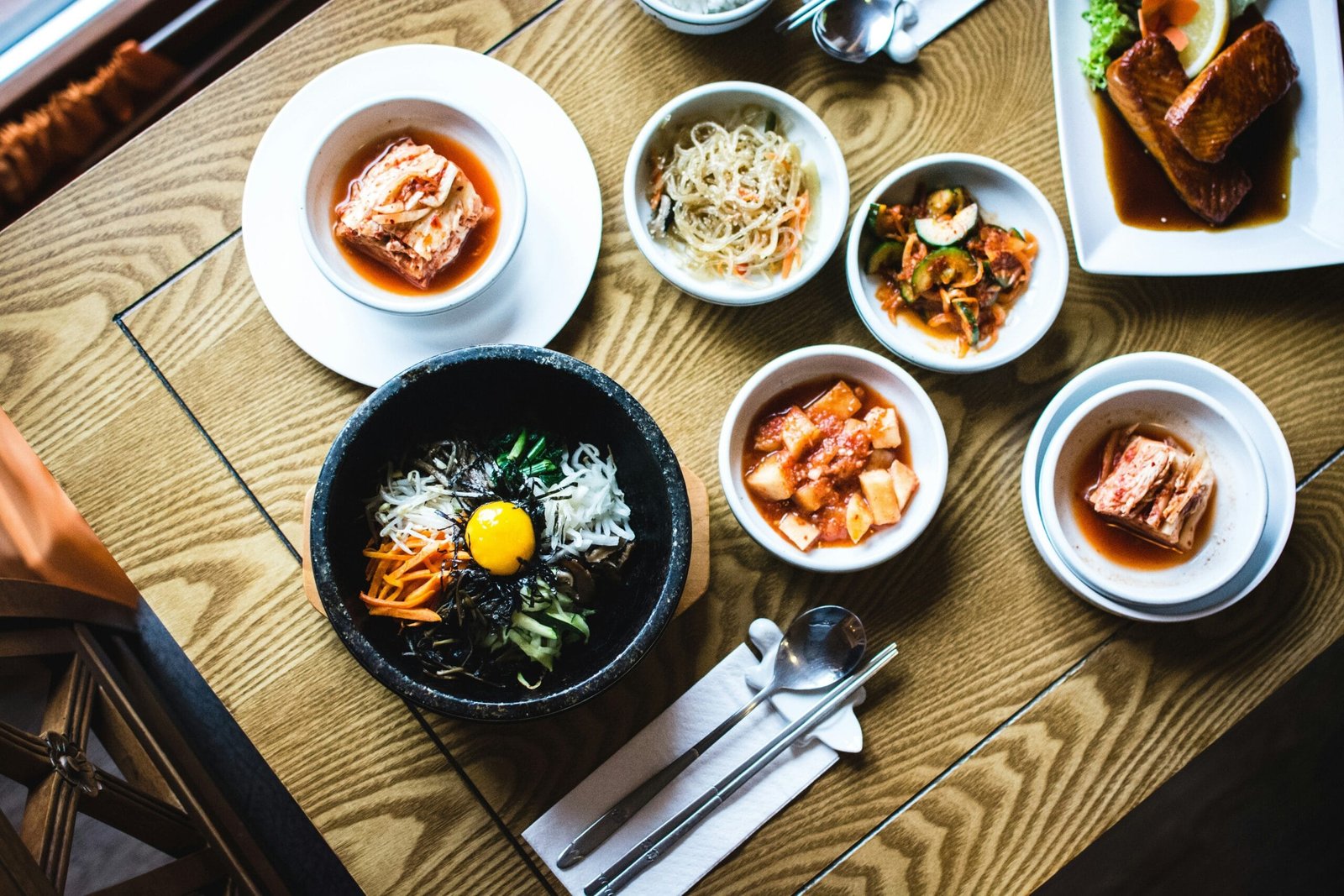Have you ever wondered how a single ingredient can transform a dish entirely? In the world of Korean cuisine, soybean sprouts are a prime example of this culinary magic. Often enjoyed for their refreshing crunchy texture and mild nutty flavor, soybean sprouts are widely used across various traditional Korean dishes. Their role goes beyond mere garnish; they are often integral to the dish, complementing flavors and providing a nutritional boost.

The Significance of Soybean Sprouts in Korean Cuisine
Soybean sprouts, known as “kongnamul” (콩나물) in Korean, are more than just a component of a dish. They have a storied place in Korean culinary history. Cultivated for centuries, soybean sprouts are valued not only for their flavor and texture but also for their nutritional benefits. Rich in vitamins and minerals, these sprouts are high in protein, fiber, and essential amino acids, making them a vital part of the Korean diet.
Their versatility allows them to be used in a variety of dishes, from soups and stews to side dishes and main courses. Let’s explore some traditional Korean dishes that prominently feature soybean sprouts.
Kongnamul Muchim (Seasoned Soybean Sprouts)
A staple side dish, Kongnamul Muchim is beloved for its simple yet delicious preparation. Often served alongside a traditional Korean meal, it pairs well with other flavors, providing a fresh and crispy texture.
Preparation and Ingredients
This dish is a testament to the adage that simple is best. Just a few ingredients are needed: freshly boiled soybean sprouts, garlic, sesame oil, sesame seeds, and green onions. Some variations also include gochugaru (Korean red chili flakes) for added heat.
Here’s how you can create Kongnamul Muchim at home:
- Boil the sprouts: Blanch the soybean sprouts for about 3-4 minutes.
- Season: Mix the sprouts with minced garlic, sesame oil, chopped green onions, and sesame seeds. If you like it spicy, sprinkle in some gochugaru.
- Serve: Chill the seasoned sprouts in the fridge to allow the flavors to meld, then enjoy this refreshing side dish.
Kongnamul Guk (Soybean Sprout Soup)
Kongnamul Guk is another classic example of a dish where soybean sprouts shine. This humble, clear soup is comfort food at its best, often served when someone’s feeling under the weather or nursing a hangover.
A Simple Recipe with Depth
The beauty of Kongnamul Guk lies in its simplicity and depth of flavor. Made from a light broth seasoned with a touch of soy sauce or salt, this soup can include additional components like tofu or fish. The primary ingredient remains the fresh, crunchy soybean sprouts, which provide both texture and nourishment.
Basic Ingredients:
- Soybean sprouts
- Water or vegetable broth
- Soy sauce or salt
- Green onions
- Optional: tofu, fish, or dried anchovies for richer flavor
Cooking Method:
- Boil the water or broth, add soybean sprouts and simmer for 5-10 minutes.
- Season the broth with soy sauce or salt to taste.
- Garnish with chopped green onions before serving.
Bibimbap (Mixed Rice with Vegetables)
Perhaps one of the most internationally recognized Korean dishes, Bibimbap features beautifully arranged vegetables, rice, and protein, often with a fried egg on top. Soybean sprouts are an essential part of this colorful medley.
The Art of Balance
Each vegetable in Bibimbap is carefully prepared and seasoned individually to bring out its flavor. The soybean sprouts provide a crunchy contrast to the softer textures of rice and other vegetables like spinach, mushrooms, or carrots. When mixed together, the flavors harmonize, offering a perfect balance of nutrition and taste.
Ingredients Typically Include:
- Cooked rice
- Soybean sprouts
- Spinach, carrots, mushrooms, and zucchini
- Protein such as beef, chicken, or tofu
- Gochujang (fermented red chili paste)
- Sesame oil and seeds
- Egg (fried or poached)
Preparation:
- Sauté each vegetable separately, seasoning with a dash of salt and sesame oil.
- Place a portion of rice in a bowl, top it with the vegetables, and add your choice of protein.
- Drizzle with gochujang, and mix everything together thoroughly before eating.

Yukgaejang (Spicy Beef Soup)
For those who enjoy a bit of spice, Yukgaejang is a rich and hearty soup that offers layers of flavor. Soybean sprouts add both texture and nourishment, soaking up the flavorful broth and forming the base of this filling dish.
Building Layers of Flavor
Yukgaejang requires a little more preparation, but the result is worth every effort. The soup combines beef, vegetables, and a variety of seasonings that create an irresistible melody of flavors, with soybean sprouts playing a key role.
Main Ingredients:
- Beef (brisket or chuck)
- Soybean sprouts
- Leeks, fernbrake (gosari), mushrooms
- Korean chili powder, garlic, soy sauce, sesame oil, and black pepper
Cooking Steps:
- Simmer the beef with water, garlic, and onions until tender; shred it after cooling.
- In the broth, add soybean sprouts, vegetables, and beef, then season with chili powder, soy sauce, and sesame oil.
- Allow everything to cook together, forming a rich, spicy broth perfect for chilly days.
Budae Jjigae (Army Stew)
Budae Jjigae, or “Army Stew,” emerged in the aftermath of the Korean War and has since become a beloved dish. It’s an eclectic mix of ingredients, illustrating how soybean sprouts can seamlessly adapt to contemporary versions of traditional dishes.
A Fusion of Flavors
Budae Jjigae combines the traditional with the modern, creating a hearty stew with a base of kimchi and gochujang. The addition of soybean sprouts offers a fresh crunch amidst ingredients like sausages, baked beans, and instant ramen noodles.
Composition:
- Soybean sprouts
- Kimchi and gochujang
- Sausages, Spam, or ham
- Instant ramen noodles and slices of cheese
- Optional vegetables and rice cakes (tteok)
Cooking Approach:
- Layer the chosen proteins and vegetables in a pot, along with soybean sprouts.
- Pour broth (usually made of anchovies or beef) and bring it to a boil with kimchi and gochujang.
- Add ramen noodles and cheese toward the end to thicken the stew, and simmer until everything is cooked through.

Janchi Guksu (Banquet Noodles)
Janchi Guksu is a comforting noodle soup traditionally served on special occasions, such as weddings or birthdays. Soybean sprouts are often used as a delicate topping, enhancing the soup’s texture and nutritional value.
A Celebration in a Bowl
This noodle dish is celebrated for its clear broth and simple but delightful flavors. Soybean sprouts provide a crunchy counterpart to the soft noodles, balancing the meal beautifully.
Basic Ingredients:
- Wheat noodles
- Soybean sprouts
- Light broth (anchovies, kelp, or beef)
- Toppings like carrots, zucchini, eggs, and seaweed
Simple Directions:
- Prepare the broth, adding in the noodles and cooking till soft.
- Top with blanched soybean sprouts, julienned vegetables, and strips of egg.
- Serve hot with a touch of soy sauce and toasted seaweed for extra seasoning.
Doenjang Jjigae (Fermented Soybean Paste Stew)
Last but not least, Doenjang Jjigae incorporates soybean sprouts into its rich and flavorful broth. This dish celebrates the depth of Korean fermented soybean paste, paired beautifully with fresh vegetables and sprouts.
The Heart of Korean Home Cooking
Doenjang Jjigae is often likened to the soul of Korean cooking due to its earthy flavors and nourishing properties. Soybean sprouts contribute an extra layer of texture and nutrition to this stew, which is a staple in many Korean households.
Central Ingredients:
- Doenjang (fermented soybean paste)
- Soybean sprouts
- Vegetables like zucchini, potatoes, onions, and chili peppers
- Optional: tofu and seafood
Preparation Process:
- Dissolve doenjang in water or broth, then bring to a boil.
- Add in vegetables, tofu, and soybean sprouts, allowing everything to cook together.
- Season the stew according to taste, serving it with steamed rice for a complete meal.
In conclusion, soybean sprouts are a quintessential ingredient in a myriad of traditional Korean dishes, each showcasing their unique ability to adapt and enhance the dish’s flavor and nutrition. From the simplest side dish to complex stews, their incorporation not only reflects the culinary ingenuity of Korean cuisine but also emphasizes the importance of nutrition and taste in creating harmonious meals. Have you tried any of these dishes before, or perhaps felt inspired to bring some Korean flavors to your kitchen?

